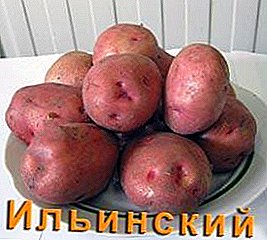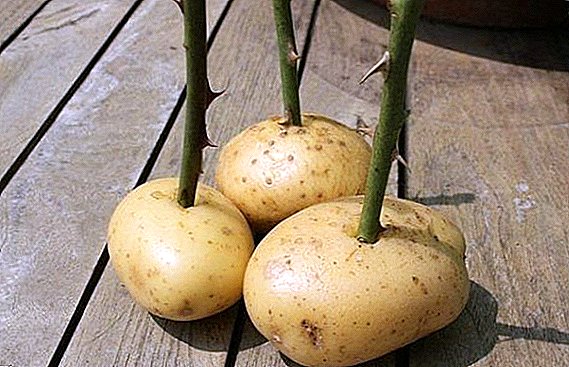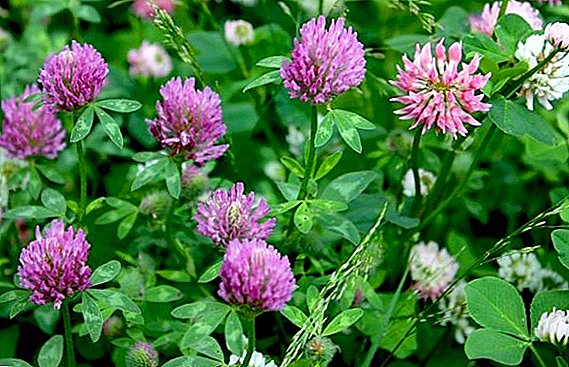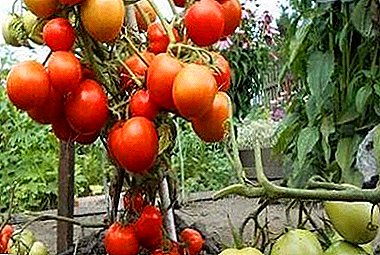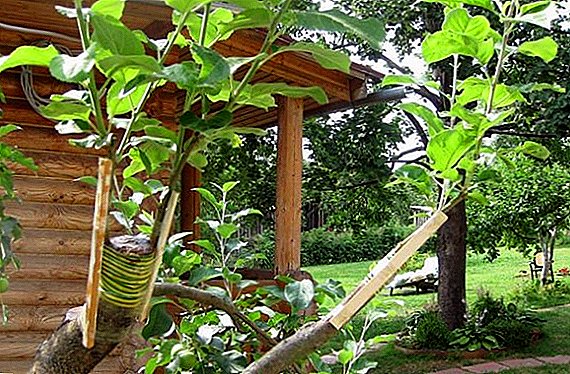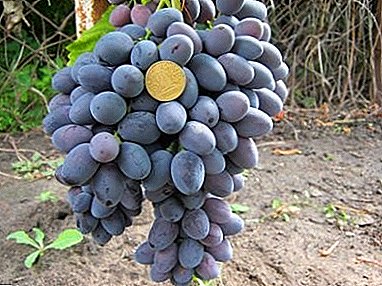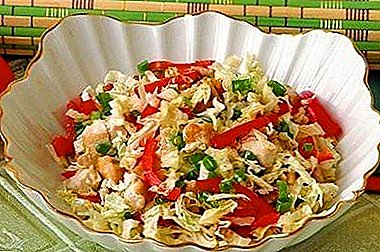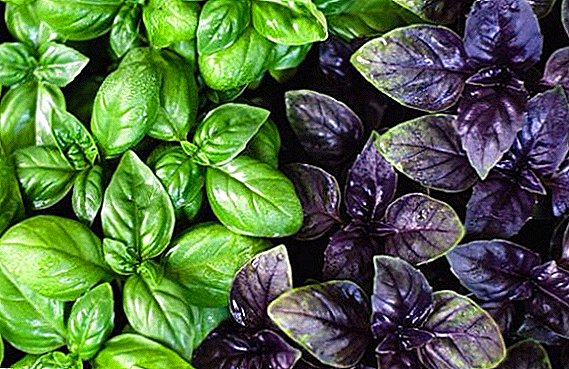 Among all plants known to man, basil has a special place. Its name - Ocimum basilicum, or the Royal Scent - speaks for itself: different varieties of basil contain essential oils, phytoncides, saponin and have high taste and aromatic qualities.
Among all plants known to man, basil has a special place. Its name - Ocimum basilicum, or the Royal Scent - speaks for itself: different varieties of basil contain essential oils, phytoncides, saponin and have high taste and aromatic qualities.
Did you know? Common basil (European or Mediterranean) has been cultivated for over 2500 years. His homeland is India and Iran. Basil was brought to Europe by the warriors of Alexander the Great. In Western Europe, it began to be actively used from the 16th century, in Russia - from the 18th century. Initially cultivated only as a medicinal plant (even in antiquity, people noticed its anti-inflammatory, analgesic, tonic properties).
Modern classifications include more than 150 varieties of basil, which differ in the color of the leaves, the aroma and height of the stem.
How to distinguish basil by leaf color
The color of basil is an important feature by which there are two basic types: green and purple coloring of leaves and stalks. These initial types served as the basis for further breeding work.
Green basil
Basil green (the old name is sweet basil) has long been known in Mediterranean Europe (in various forms it is commonly used in the preparation of various dishes). Cooks especially appreciate the tenderness of its aroma and taste. Green varieties are varied (from bright salad to dark green shades):
- Genoese (or Italian) basil - has a strong aniseed smell, enhances the taste. This variety is a must-have ingredient of the famous pesto sauce. Used in fresh and dried form as a flavoring for salads, put in tea and lemonade with mint. It grows well in indoor pots.

- Evenil Basil is a thermophilic (native to South Africa). Large leaves have a complex smell (mint is combined with hints of lemon, cloves and pepper). Taste - with a slight bitterness. Can grow up to 1 m. Popular as a seasoning for soups, meat dishes. Often added to the preparation of marinades, jam and jam.
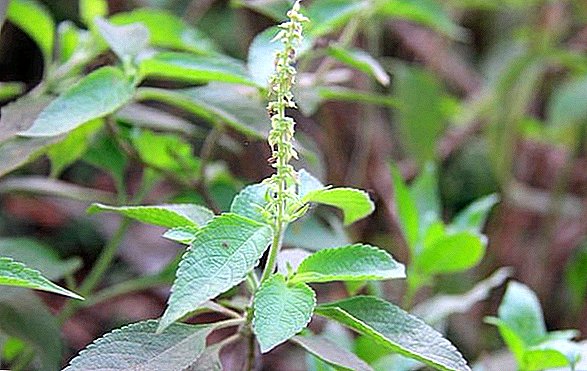
- Broadleaf basil - large succulent leaves (from one bush up to 250 g) have a bright aroma of allspice, especially rich in essential oils. This variety is actively used for making salads and added to marinades.
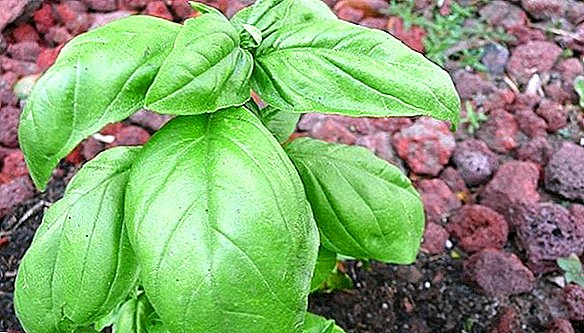
Important! If it is not possible to dilute fresh basil, it can be salted - the aroma and chemical composition of basil will not be affected.
Purple basil
Purple basil it has a very strong smell and taste, contains 1.5-2 times more aromatic oils than green. It is more traditional for the Front and South Asia (from the middle of the twentieth century it spread in Europe and America). Purple basil is traditionally eaten in the form of greenery, used in the preparation of various dishes. These include:
- Common basil (Ocimum basilicum, purple Ararat) - known throughout the world. The plant has a pleasant pepper-clove scent. Grade height - from 30 to 60 cm. Very unpretentious. Suitable for indoor growing. Use fresh and dry in the preparation of salads, marinades for canning vegetables.

- Yerevan Basil is the second most popular and common. For the season gives 2 - 3 harvest. It has a tart taste (taste of tea and allspice). Especially well gives the taste in soups, salads, meat and fish dishes, sauces. Bright basil coloring decorates flowerbeds well.

- Basil Dark Opal (red basil) - bred in the 1950s. in USA. Popular in the world for its pepper-and-clove aroma. Fresh leaves are used to make salads, dried - included in the composition of spicy mixtures, flavored oils, vinegar. Grows well in pots.
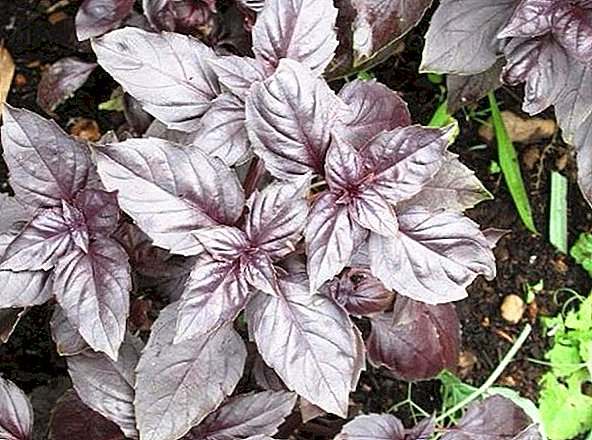
- Tulasi (Sacred Basil) - differs in sharp perechno-clove aroma, taste with bitterness. This spicy basil herb is especially popular in India, it is used to cook spicy dishes, it is used in rites.

- Basil Osmin - spicy and ornamental plant. Homeland - India. Used in the preparation of salads, marinade mixture. Heat-loving, easily planted in pots.

Important! Most of the essential oils accumulate in the basilica in the spring (the period of active growth of greenery), ascorbic acid - with the appearance of peduncles.
Classification of basil by aroma
Another principle for classifying basil varieties is fragrance. The culinary use of a particular basil variety depends on the flavor. So, basil with the smell of cloves, pepper, lemon is better suited to meat dishes, anise - fish or vegetable dishes.
Clove
Among the varieties with clove odor are clove, basil, Clove Aroma, Spring mood, Dark complexion, Red Rubin, Stella, Perfection, Dark night.
- Clove basil - small green leaves form a dense bush (height - 60 cm). Suitable for year-round cultivation at home in pots.

- Basil Clove Aroma - medium early variety. The strength of the aroma is able to replace the cloves when pickling and salting. It is widely used in seasonings and sauces to meat and fish dishes. Height - up to 25 cm, ideal for pot growing.
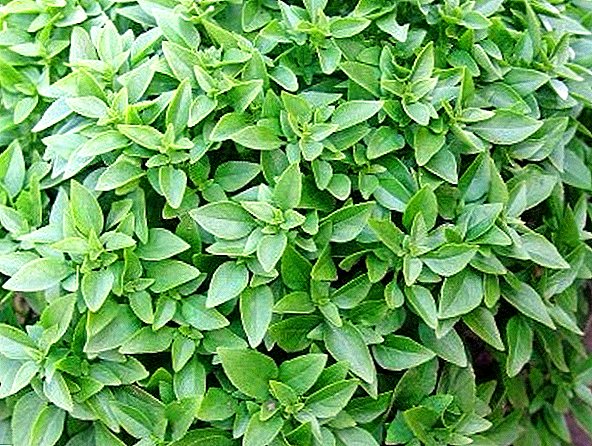
Did you know? Different nations call this plant differently: basil garden, cat's mustache, oximon, rean, rayon, basilio, tulsi, red cornflowers, etc. There are many signs and beliefs associated with it: for Hindus, this sacred plant is the seat of the goddess Tulpi , the Celts - a symbol of marriage, the ancient Romans considered it a symbol of success, the Catholics - a symbol of holy communion, in Provence, basil was called the tears of the Virgin, in the era of medieval witch-hunting they considered this spice as "witch's grass."
Peppermint
The best varieties of basil with a similar smell - Marquis, Basilisk, Dreamer.
- Basilisk is a compact variety (from 15 cm) with small smooth ovoid leaves. Grows well in pots and open field. In cooking used in various forms.

- Marquis - green upright small-leaf variety (height - 25 cm), grows well in pots in room conditions, on window sills. The mass of one plant is 150 g.
Pepper
Peppery aroma is distinguished by camphor basil, Magic of the East, Aramis, Orion, Rosie, Ruby, Compatto, Osmin, Ruby Cairo, etc.
- Camphor basil (myatolidae) - known for tartness and saltiness, soft pepper flavor. This is one of the most common species. Height 55 - 70 cm. It is a wonderful seasoning for meat, cheese, pasta, fish.

- Ruby Cairo - black and purple variety with a bright spicy pepper flavor. The taste is slightly hot. When dried is preserved. Height 25 - 30 cm. Can be grown in pots and vases.
Citric
Among the varieties with lemon flavor - Lemon Basil, Moscow Bogatyr, Spark, Novelty, Lemon Aroma, etc.
- Basil Lemon Aroma - has one of the most powerful flavors. Semi-bushy bush brings 250 g of smooth light green leaves. Greens are used to add flavor and to decorate jelly, desserts, mousses, salads and drinks.

- Lemon basil - small-leaf variety (height - 35 cm) with lemon flavor and camphor smell. It gives the main dishes, salads and desserts a light sour flavor.
Caramel
The aroma of caramel is most pronounced in varieties of Red Rubin Nem Zaden, Caramel, Lyubimchik, etc.
- Red Rubin Nem Zaden - bred in Holland, has a rare smell of fruit caramel. The bush gives a harvest of 300 g. They flavored drinks, vinegars, used in the preparation of salads, pickles. In addition to fresh and dried, you can use frozen basil.
- Caramel - early ripe high-yielding with rare fruit and caramel aroma. Widely used in cooking as a flavoring agent.

Did you know? In the production of camphor oil, the main ingredient is foliage basil. For the production of vanillin basil is used Evenol.
Marinade
Basil used to make marinades is mainly green leaf species and varieties (Basilisk, Clove Flavor, broadleaf, Evenol, Greek). Also suitable for the black and purple variety Ruby Cairo. There are also specially bred varieties for marinades.
- The tempter is a specially bred marinade vegetable variety with a very large green leaf and a sharp aroma. When canning and pickling used fresh and dried.
Anisic
Among the anise flavors are known - Anise Basil, Gourmet Anise, Anise Delight, Anise Aperitif, etc.
- Anise basil is one of the varieties of sweet basil. It has silvery leaves and purple stems and inflorescences. It grows equally well in indoor pots and in the garden. In the garden quickly multiplies and suppresses weeds.

Peppermint
The most prominent representative of this flavor is Greek basil:
- Greek basil - the most delicious basil, world-famous for its classic flavor and peppermint flavor. Bushes (height - 15 cm) have the form of a ball of small leaves. Well grown in pots. Actively used in Mediterranean cuisine (salads, marinades, tomato sauces, etc.)

Important! Basil is able to give a good harvest all year round in room conditions on the windowsill. A prerequisite - the pot must be ceramic.
Menthol
A classic representative of menthol flavor is Basil Velvet.
- Velvet - with dark green elongated (8 cm) leaves, height - 25-30 cm. Used for pickling, flavoring vinegar and oil, drinks, can be dried and frozen. It has tonic properties.
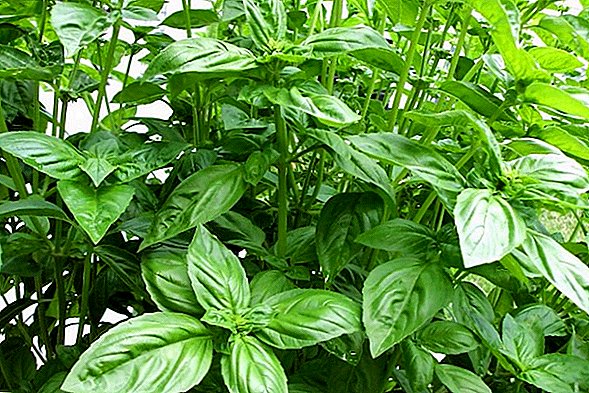
Vanilla
These varieties are used mainly in the production of confectionery.
- Vanilla fragrance - tall unpretentious variety. Juicy leaves (at a young age - green, when ripe - purple) have a savory vanilla flavor. Good susceptible to growing in room conditions. Serves as a food additive in confectionery.
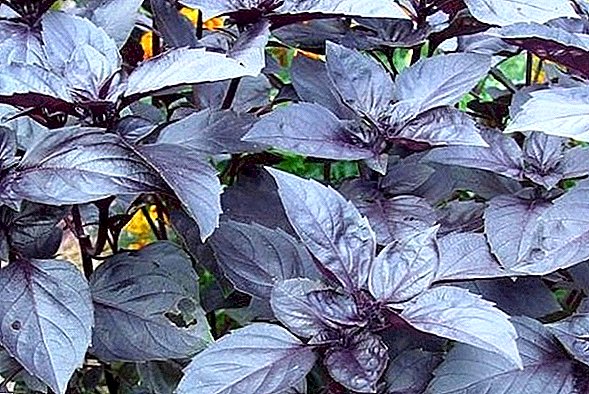
Did you know? Basil is a good, time-tested afrodosiak: in ancient Rome it was believed that it cures both sexes from sexual coldness. Basil helps to relax and simultaneously increases the potency.
How are plants divided by height
The following principle of classification of varieties of basil - plant height: short, medium height and tall. Based on the availability of free space, you can decide which basil is better to plant.
Undersized
Low-growing varieties in height from 15 cm to 30 cm. They are suitable for potty breeding in room conditions all year round (with the use of special lighting). Such varieties include Basilisk (the most compact variety), Troll, etc.
Middle Basil
The varieties of basil are of medium height - from 30 to 60 cm: basil is cinnamon, purple, Miraculous, Delicate early, etc.
Tall varieties
Tall varieties of basil - from 60 cm to 85 cm: Clove gourmet (the most massive variety), Russian giant, Royal blood, Cairo Ruby, etc.
Important! Basil is never put into dishes with mushrooms: their tastes are not combined and "hammered" each other.





















